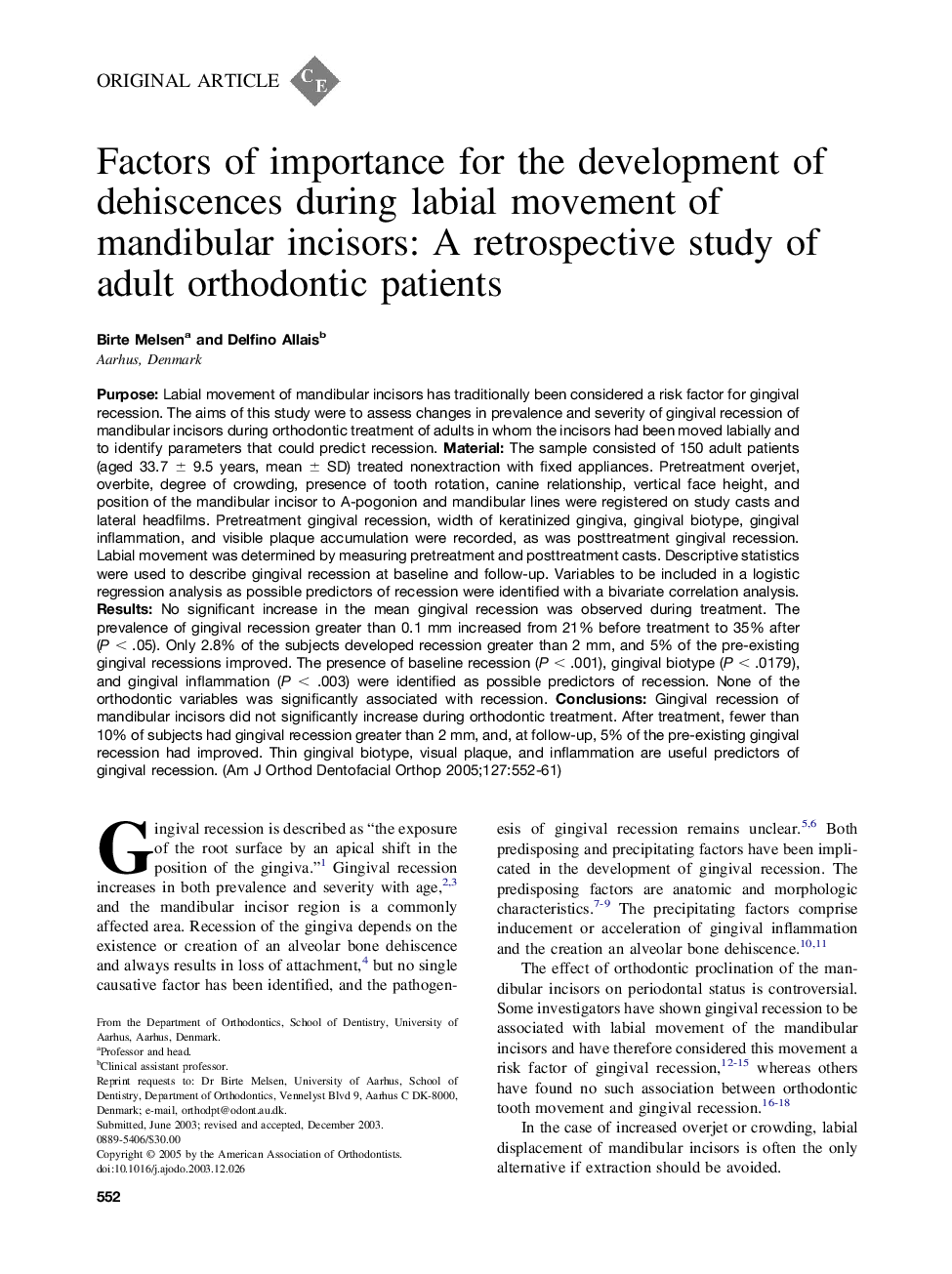| Article ID | Journal | Published Year | Pages | File Type |
|---|---|---|---|---|
| 9992918 | American Journal of Orthodontics and Dentofacial Orthopedics | 2005 | 10 Pages |
Abstract
Purpose: Labial movement of mandibular incisors has traditionally been considered a risk factor for gingival recession. The aims of this study were to assess changes in prevalence and severity of gingival recession of mandibular incisors during orthodontic treatment of adults in whom the incisors had been moved labially and to identify parameters that could predict recession. Material: The sample consisted of 150 adult patients (aged 33.7 ± 9.5 years, mean ± SD) treated nonextraction with fixed appliances. Pretreatment overjet, overbite, degree of crowding, presence of tooth rotation, canine relationship, vertical face height, and position of the mandibular incisor to A-pogonion and mandibular lines were registered on study casts and lateral headfilms. Pretreatment gingival recession, width of keratinized gingiva, gingival biotype, gingival inflammation, and visible plaque accumulation were recorded, as was posttreatment gingival recession. Labial movement was determined by measuring pretreatment and posttreatment casts. Descriptive statistics were used to describe gingival recession at baseline and follow-up. Variables to be included in a logistic regression analysis as possible predictors of recession were identified with a bivariate correlation analysis. Results: No significant increase in the mean gingival recession was observed during treatment. The prevalence of gingival recession greater than 0.1 mm increased from 21% before treatment to 35% after (P < .05). Only 2.8% of the subjects developed recession greater than 2 mm, and 5% of the pre-existing gingival recessions improved. The presence of baseline recession (P < .001), gingival biotype (P < .0179), and gingival inflammation (P < .003) were identified as possible predictors of recession. None of the orthodontic variables was significantly associated with recession. Conclusions: Gingival recession of mandibular incisors did not significantly increase during orthodontic treatment. After treatment, fewer than 10% of subjects had gingival recession greater than 2 mm, and, at follow-up, 5% of the pre-existing gingival recession had improved. Thin gingival biotype, visual plaque, and inflammation are useful predictors of gingival recession.
Related Topics
Health Sciences
Medicine and Dentistry
Dentistry, Oral Surgery and Medicine
Authors
Birte Melsen, Delfino Allais,
